
Students holding slogans at the Sir Georg Solti Garden demanding SAIC cut financial ties with the Crown family. Photos by Gouri Bhuyan.
Author’s Note: Individuals who spoke publicly at this gathering were intentional about introducing themselves with first names only. As part of the student community, even though the author, editors, and many of our readers may be aware of the full names of the speakers referenced in this article, the author has deliberately chosen to stick to the manner in which the speakers identified themselves, in order to preserve the safety of peers and community members, over any journalistic practices that mandate the listing of full names as a rubric of credibility. The editors of this article have also chosen to back this journalistic agency.
Classes hadn’t ended, and lunch hadn’t started, but students nevertheless left their classrooms and exited buildings at the School of the Art Institute of Chicago at noon on Oct. 24. They were participating in a staged walkout, organized and led by the Students for Palestinian Liberation. En masse, demonstrators gathered outside the MacLean Building. If you were anywhere nearby, you heard it and felt it in all its unequivocal strength and numbers.
Emotions were high and intentions clear as the students rallied against what they described as SAIC’s complicity in the ongoing genocide against Palestinians.
Approximately 300 students and community members turned up to demonstrate their support. Donning keffiyehs and masks, carrying posters and slogans, protesters chanted, “Disclose. Divest. We will not stop; we will not rest.”
The SPL publicized their agenda on their Instagram page in a post on Oct. 20.
“There is no ethical education at a school funded by genocide, funded by the Crown family, General Dynamics, and the sales of 2,000 pound ‘bunker buster’ bombs used frequently by the IOF,” the post reads.
As of Nov. 12, the post has over 780 likes and approximately 400 shares.
According to a news item posted on SAIC’s website, the school received a $2 million gift from the Crown Family Philanthropies in 2016. The gift endowed a full professorship in the Painting and Drawing department, who would be known as the Crown Family Professor.
In 2021, Forbes listed the Crown family as the 34th richest family in the United States of America. According to a 2024 Forbes article, their net worth is $14.7 billion, and their primary source of wealth is “defense, investments.”
In 1959, Henry Crown merged his building supplies company with General Dynamics, which is, according to its website, a “global aerospace and defense company.” Its portfolio of products includes business jets, wheeled combat vehicles, command and control systems, nuclear submarines, and more. As of 2024, it is the world’s fifth largest military contractor.
According to a 2024 report by the Watson Institute of International & Public Affairs, General Dynamics makes the metal bodies for Israel’s MK-80 bomb series, one of the primary aerial weapons Israel has used to bomb Gaza. At least 208 craters likely caused by the use of the 2000-pound variety in the bombing of Gaza were identified using satellite imagery and drone footage in the first six weeks of the war alone. According to a CNN analysis, these bombs were four times heavier than the majority of the largest bombs the United States dropped during the war against the extremist group Islamic State in Iraq and Syria.
Though Henry Crown, who had been the largest shareholder in General Dynamics, died in 1990, the Crown family continues to own 10 percent of General Dynamics, and James S. Crown is the company’s lead director.
Steven Crown, a member of the family, is a member of the Art Institute of Chicago’s Board of Trustees and SAIC’s Board of Governors. The Art Institute of Chicago is home to the skylit Henry Crown Gallery at the top of the central stairway.
SPL was founded in 2023 by students of SAIC in response to the genocide in Gaza. They staged this walkout in strong opposition to SAIC’s continued ties to the Crown family.
In solidarity with SPL were representatives of other Chicago pro-Palestine organizations as well as other SAIC student clubs. Representatives from Jewish Voices for Peace, Palestinian Youth Movement, U.S, Palestinian Community Network, Jisoor, University of Chicago Students for Justice for Palestine, the SAIC affinity group SAIC UNIDXS, and the SAIC student government were among those assembled.

A protester holds a sign calling for an arms embargo as they walk from the MacLean building to the Art Institute of Chicago.
The walkout featured individual speakers who touched upon topics such as the systemic downplaying of the death toll in Gaza and SAIC’s complicity in this ongoing genocide, and were met with reverberating support in the form of chants of “Shame!” from the gathering of protesters.
Addressing the ongoing atrocities in Gaza, Marium, the representative of SPL, spoke to the accusation by the Israeli Army of six Al Jazeera journalists covering the war on Gaza as being members of the military resistance group, Hamas. These journalists are the only six left documenting the atrocities in Northern Gaza. Al Jazeera rejected these claims.
On Oct. 25, the day following the student walkout, an air strike by Israel killed three journalists in southern Lebanon, as reported by CBS News.
According to the Committee to Protect Journalists, at least 134 journalists and media workers are among those killed in Gaza, the West Bank, Israel, and Lebanon as of Oct. 30, 2024. This makes it “the deadliest period for journalists since CPJ began gathering data in 1992.”
The speakers of the walkout were determinate in their belief of the complicity of the United States of America and institutions like SAIC in this ongoing genocide.
“Ultimately, this is a U.S. war as much as it is an Israeli war on Palestine and Lebanon, and it’s funded by our tax money. And we are gathered here today because we refuse to abandon our people and promise to continuously fight for them,” said PYM representative Rama.
SAIC Student Government representative Annikah Godard (BFA 2026) reiterated a speech she gave to the Board of Governors at their meeting on Sept. 16, 2024, that emphasized the importance of SAIC aligning its values with those of its students. Godard demanded full transparency of SAIC’s financial affiliations.
“It is imperative that we cut ties with the Crown family, whose investments do not reflect the social responsibility of our school, and what we should uphold,” said Godard.
Many of the speakers discussed the discrepancies between the rhetoric of the Israeli administration and ground realities. They spoke of significant downplaying of the death toll in Gaza by the Israeli administration.
Jisoor representative Saif spoke about the death of Hamas chairman Yahya Sinwar, saying, “[He] was killed, not assassinated — the distinction must be made. He was killed in action, with only one arm left, sitting in a chair, striking fear in the hearts of his enemies. Yahya Sinwar made his last stand for Palestine.”
Saif read excerpts from an interview with Sinwar taken by La Repubblica reporter Francesca Borri in 2018. Sinwar spoke to the misrepresentation of Hamas as solely an armed group, instead of a social movement. In the interview, he emphasized the goal of Hamas being “a state based on democracy, pluralism, cooperation.”
Continuing the process of reframing the narrative, SAIC JVP founder and representative, Sam, spoke to the conflation of anti-Zionism and antisemitism, and the weaponizing of antisemitism by Israel and college campuses like SAIC, to justify genocide.
“Let me be clear: Zionism is a racist, settler-colonial, white supremacist ideology,” said Sam.
Sam emphasized SAIC’s history of student protests: “At SAIC, we have a history of fighting for justice, and we should let this history fuel us today.”
Referring to the larger movement for Palestinian liberation, the representative of the University of Chicago SJP/Dissenters, Lucas said, “This movement was not born out of hatred towards our oppressors. But rather, it was one that was born out of love for the oppressed.”
When asked for a comment in response to the demand for divestment, a spokesperson for the School emphasized that tuition alone does not cover the full cost of students’ education. This stands true for students receiving financial aid (90 percent of the student body according to SAIC), but also for the small number of students who pay full tuition.
“The cost of educating our students is subsidized by money generated by the endowment,” said the spokesperson.
Given that SAIC does not control the stocks selected for inclusion in index funds, it would need to exclude index funds from its portfolio, SAIC’s spokesperson said. “This limits our investment flexibility and limits our returns, which will significantly impact the value of the scholarships available to students,” said the spokesperson, while iterating how crucial the endowment is for keeping the cost of tuition lower than would otherwise be possible.
“For this reason, the Art Institute maintains a strong presumption against divesting for social, moral, or political reasons; however, we do have a process in place for community members to request that the investment committee considers divestment,” said the spokesperson for SAIC.
The Art Institute of Chicago adopted a policy on divestment in 2013. Community members who believe certain investments hinder the Institute’s mission to “promote art and design” must build a case and submit it to a Management Committee. The Management Committee may either investigate the case further or “consider the request on its face without any further investigation.” If they believe it to be a strong case, it gets passed forward to the Executive Committee, which re-evaluates it. Denials on the part of either committee cannot be appealed. Furthermore, neither of the committees is mandated to issue statements explaining their decisions or keep minutes from meetings in which divestment cases are reviewed.
On SAIC’s official website, commemorating 150 years of SAIC is the statement, “We are the challengers to the status quo. We design the world as it could be.”
Amidst chants of, “From the river to the sea, Palestine will be free; From the sea to the river, Palestine will live forever,” keffiyehs draped across the shoulders and around the faces of the gathered protesters fluttered in the chilly Chicago wind. Surrounded non-intrusively, yet closely, by the Chicago Police Department, the chants for freedom rang loud right up to the very end.
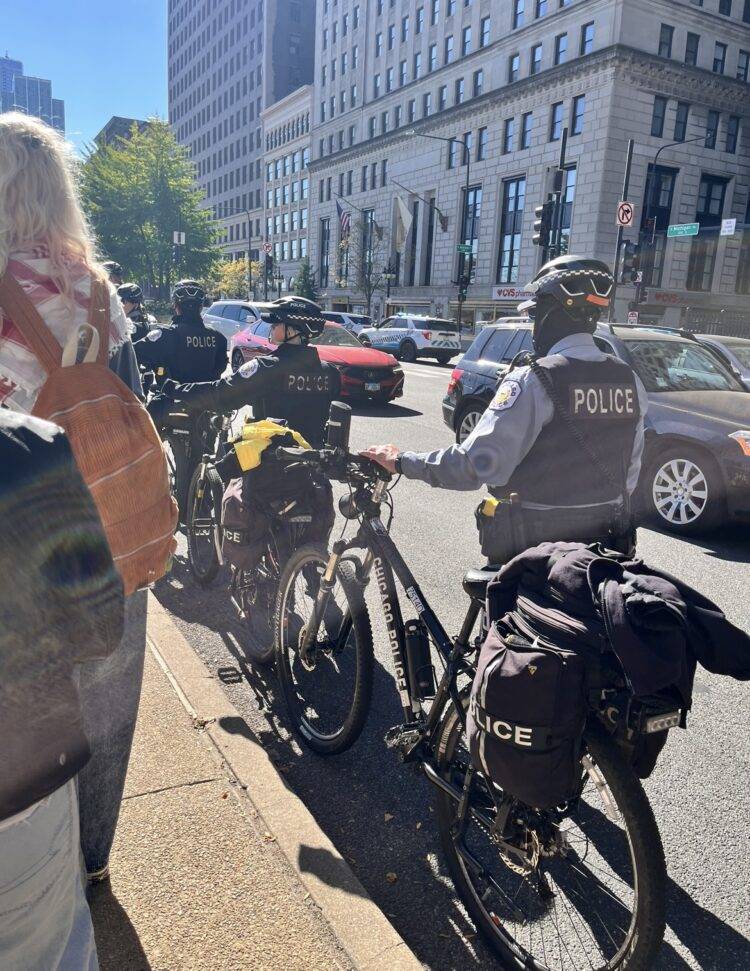
Read More →


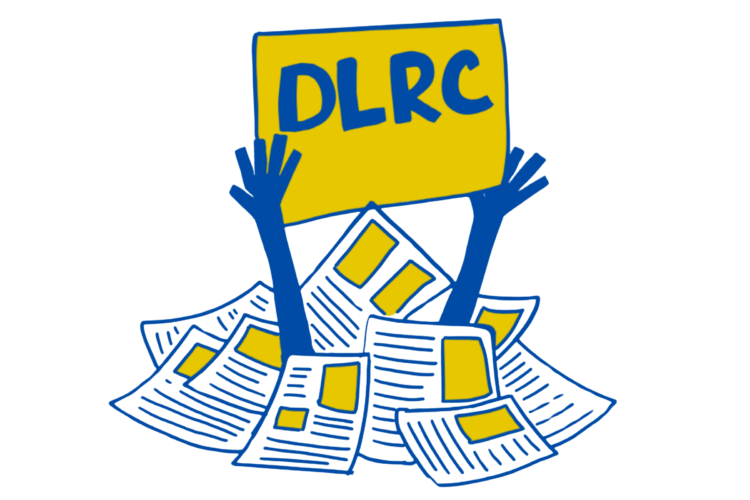
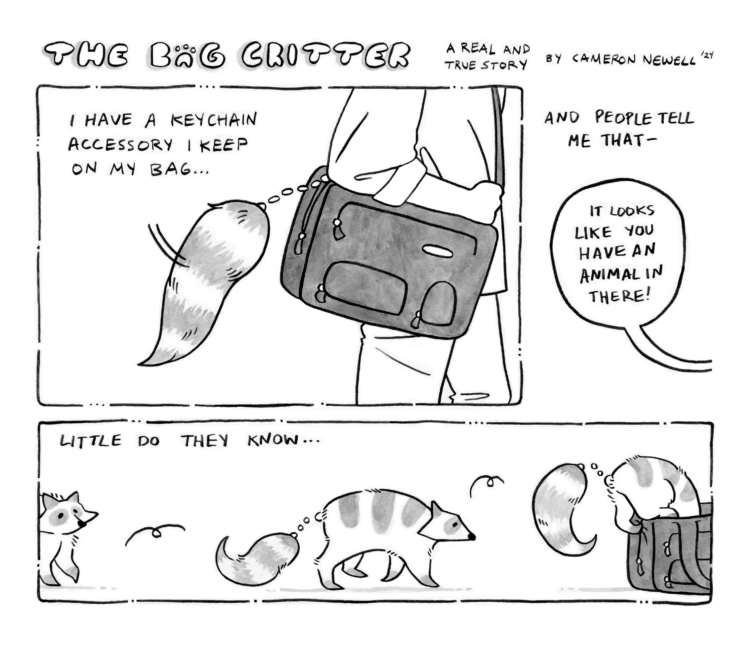
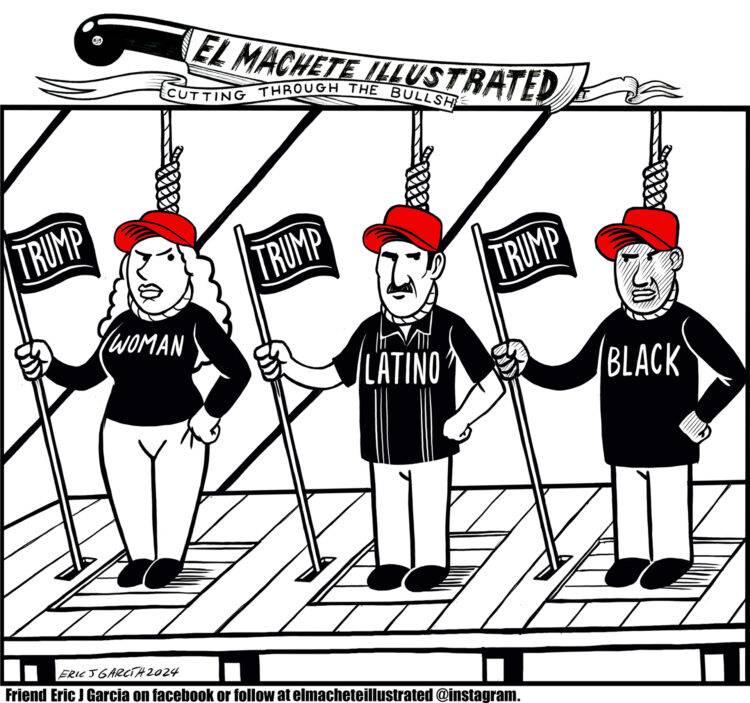
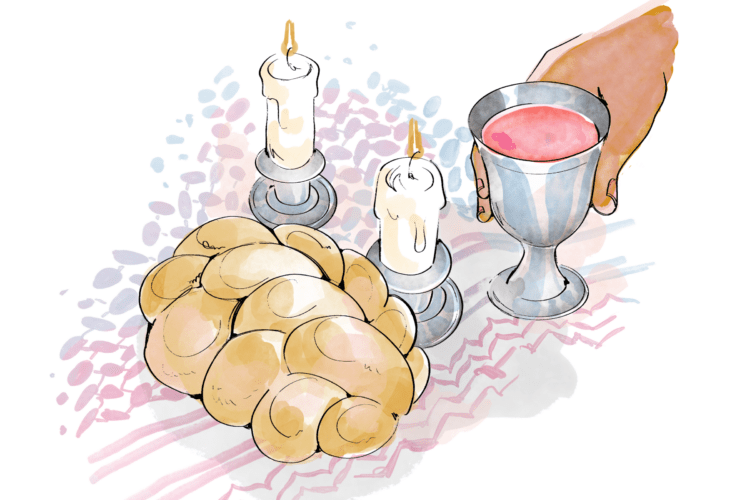
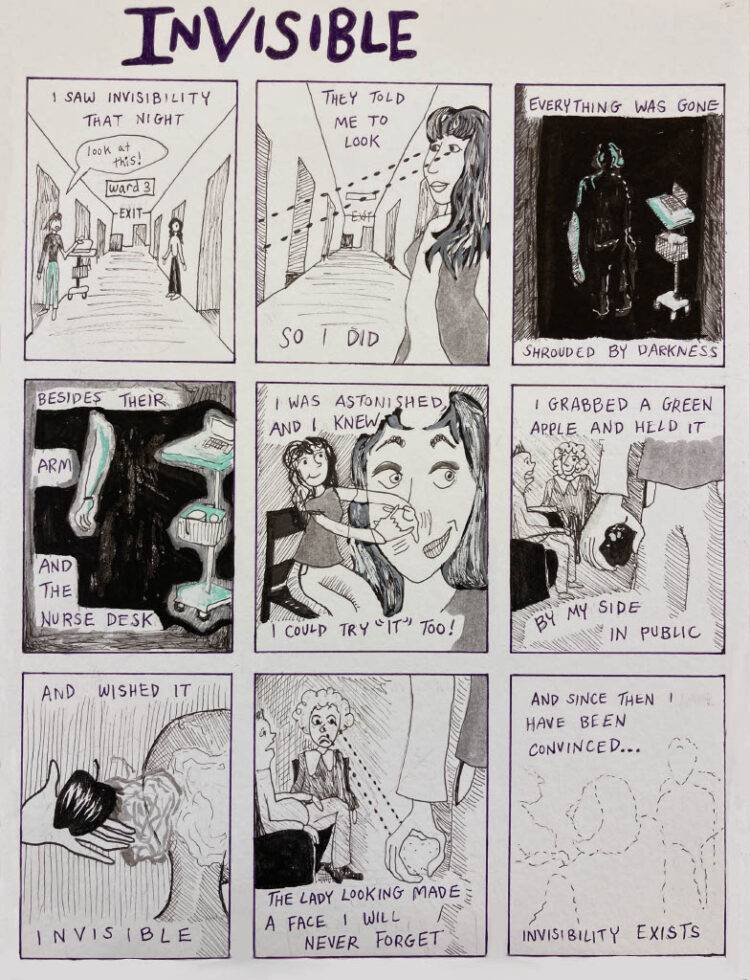
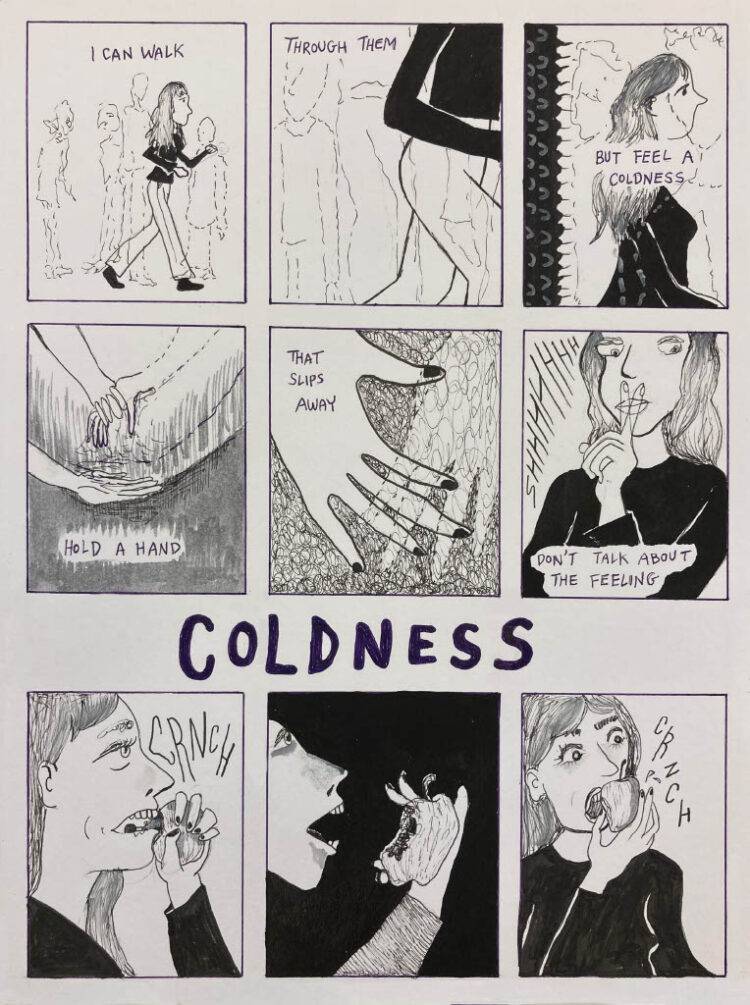
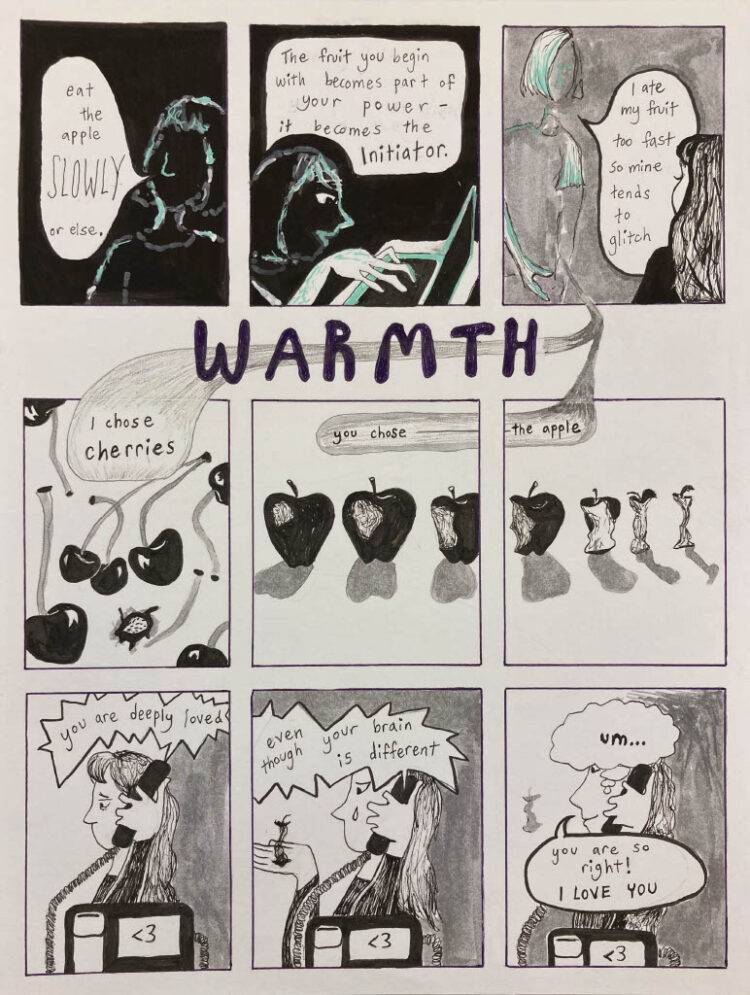
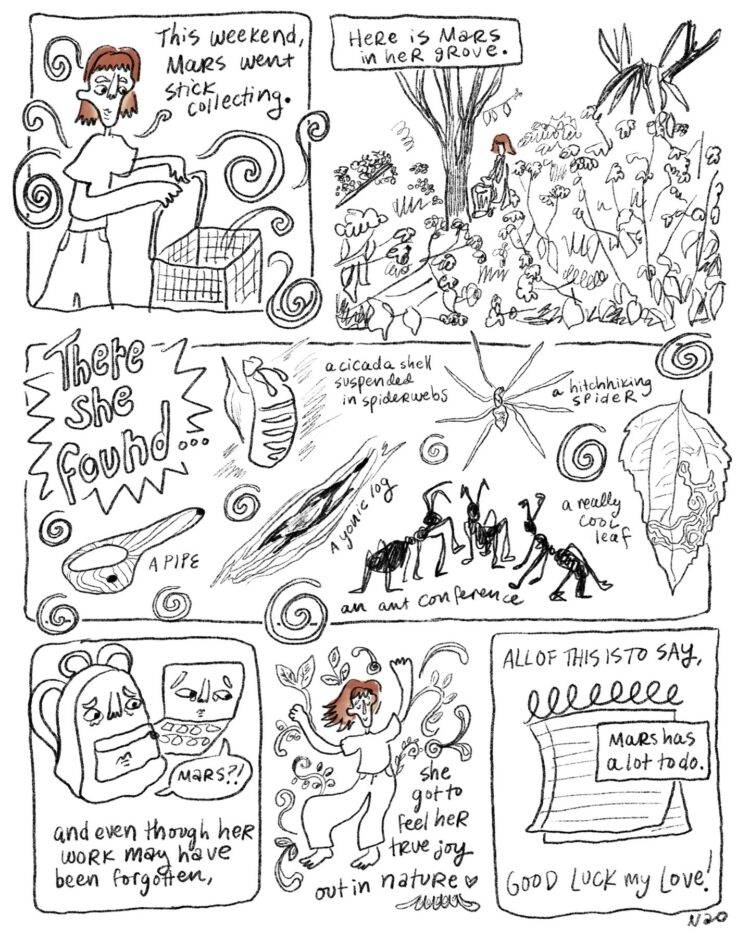
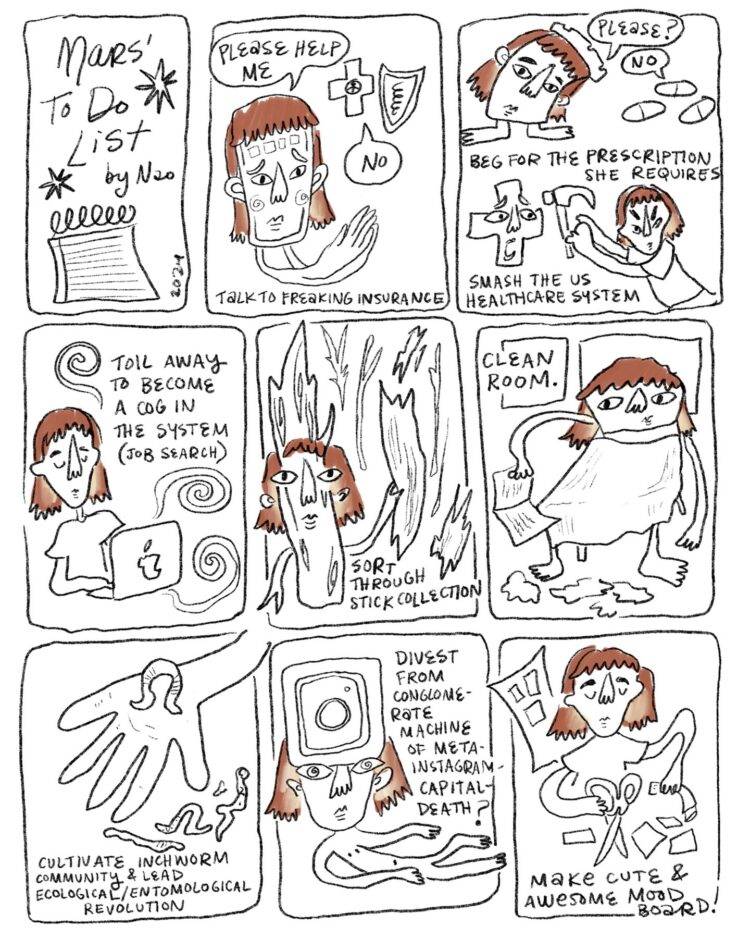

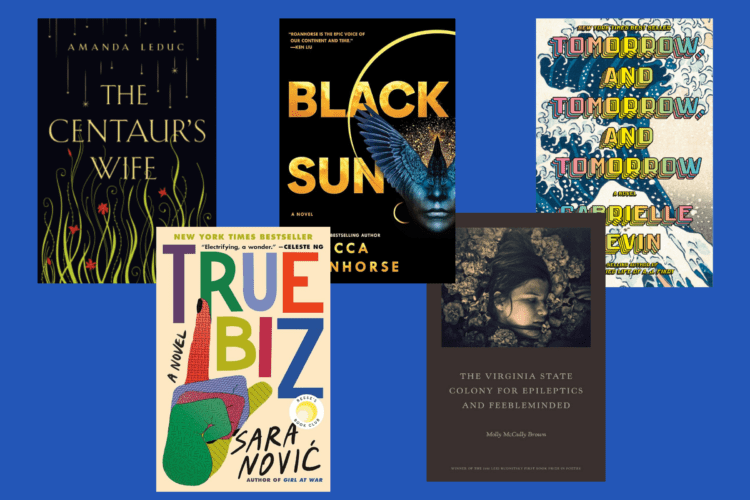
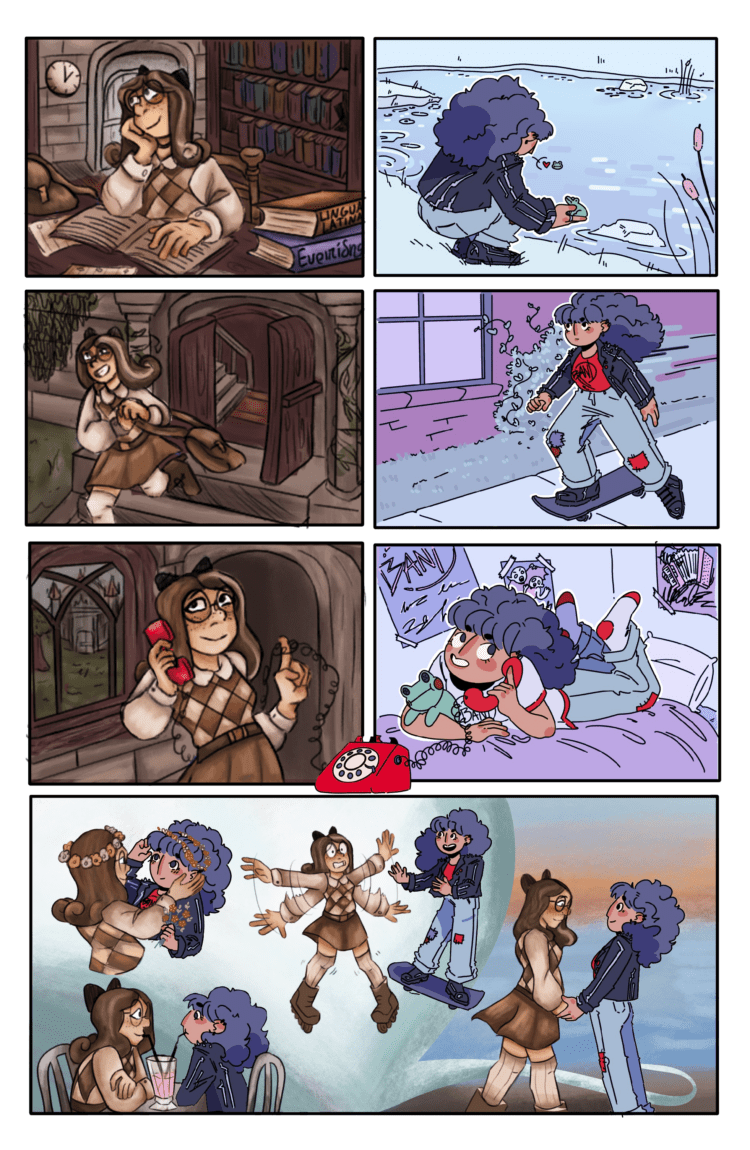



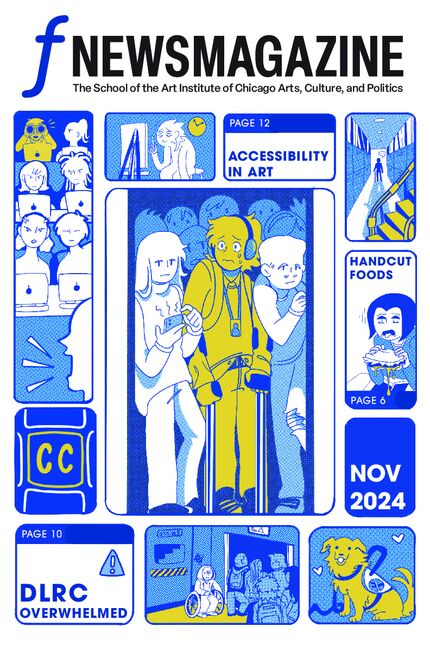
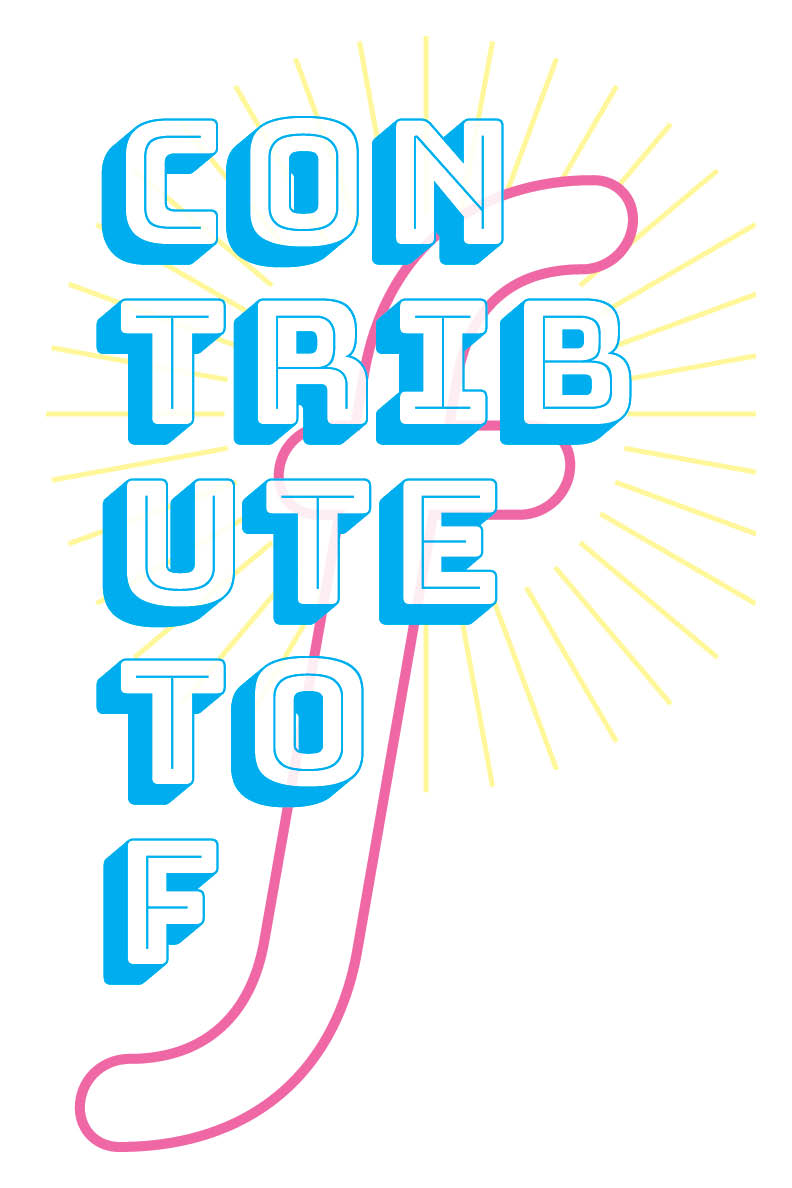

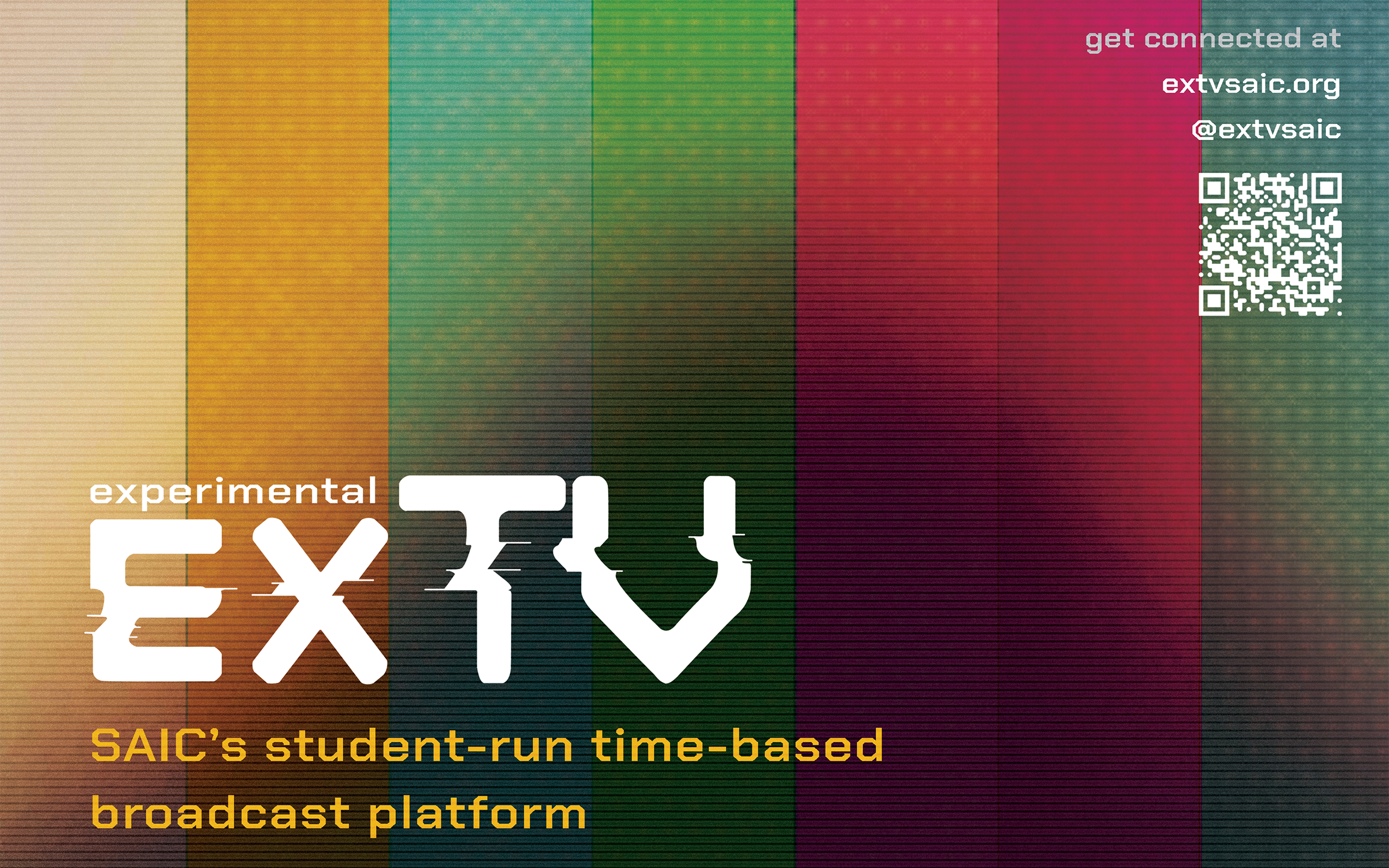
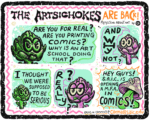




Stanley Pines!
By Laurelou Doyonnas November 25, 2024 Comics
Transcript:
Next to the title is a scruffy looking man, known as Stanley Pines, a character from the Disney cartoon Gravity Falls. He is wearing a suit and fez hat, holding a thumbs up. The narration reads, “Recently, Gravity Falls, a beloved childhood cartoon, has resurged on current (probably Queer-leaning) Media. And with it new content… I actually took part in rewatching the popular, surprisingly story enriched, cute show.” Under the text box a hand is depicted holding a phone watching TikTok videos of Stanley Pines.
The following body of text is inside an old-fashioned tv resting on a stand with miscellaneous objects on top, including a bobblehead of Stanley Pines. In front of the tv are two people, one with horns and glasses and the other with red hair and star accessories (the narrator/author). The text reads “However this was my first time watching it, and through it I found Stanley Pines.” There is an arrow pointing from the text to the man, Stanley Pines, who is eyeing the arrow and glimmering.
The narration continues “My affection for Stanley wasn’t immediate either, no; instead, it has a direct correlation with the amount of time I spent watching the show.” Under this text box there is Stanley Pines staring alarmingly at the narrator pointing to a graph that shows an upwards incline. The x-axis reads “Time Watching Gravity Falls” and the y-axis “My Attraction to Stanley Pines.”
The next two text boxes read “I know it’s “odd” and “unconventional” but I can’t help it…I’m in love with Stanley Pines (a heart is drawn next to his name). Sure, he’s a con-man with the look and vibe of an old conservative white man BUT his love for his family and his utter patheticness makes him a CATCH!” Under this text box there are 11 different Stanley Pines, drawn in different outfits and expressions. Some of the different poses of Stanley Pines are him eating a burger in only a muscle tank and gold chain, counting money, his bow tie loose as he raises an eyebrow smugly, and one of him when he was younger with a mullet and beanie. The narration continues “And not as regrettably as I’d like to be, I find him” and in big pink text: “KINDA HOT.” Beneath the pink text is Stanley with a smug face shooting finger guns and a miniature of the author kissing his cheek.
“He’s got suave, a little bit of stupidity and he’s got some major trauma…” an arrow, with an equal sign next to it, points to a pink heart with “A PERFECT MAN” written inside it. Next to the pink heart is the author as a cupid winking at Stanley Pines who awkwardly rubs at his head in fear/confusion. Three text boxes read “And while I joke and exaggerate for this “bit” there is actually something amazing about seeing the love and joy coming from the community and creator himself, Alex Hirsch. Simple joys like these, fictional or not, bring a lot of happiness to people (me), and if that’s “cringey” then I don’t care cause…” and in big pink text “CRINGE IS DEAD” Around the three text boxes are illustrations of the Mystery Shack, Stanford Pines, Bill Cipher, Dipper, and Mabel. Leaning against the “Cringe is dead” text is the narrator leaning against it while waving goodbye to the audience.
See More →